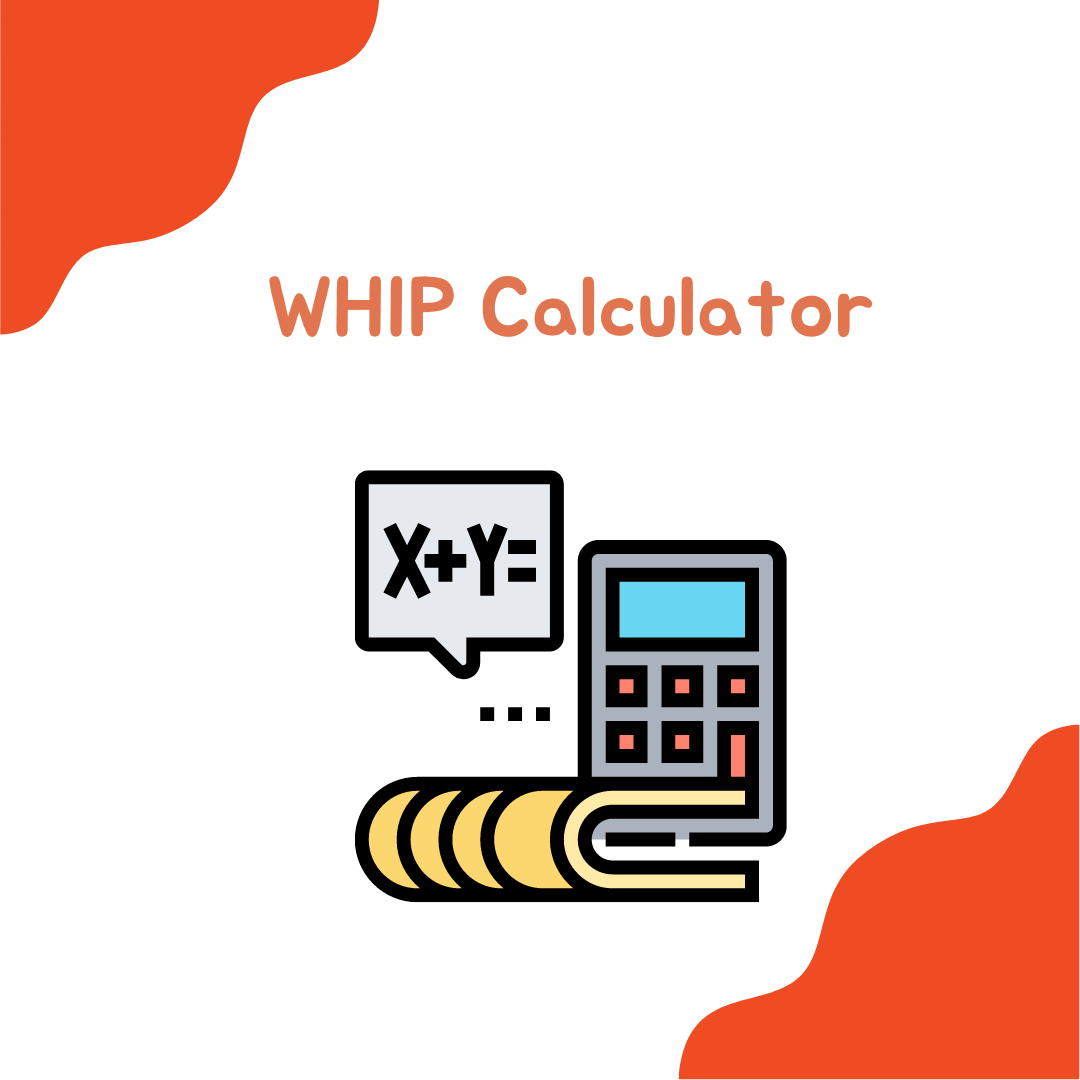WHIP Calculator
Unveiling the Marvel of Precision: The WHIP Calculator
In the world of baseball, where statistics reign supreme, few metrics offer as much insight into a pitcher’s prowess as WHIP. WHIP is a key indicator of a pitcher’s ability to control the game and keep opposing teams at bay. While the concept might sound simple, the implications of this statistic run deep. WHIP role in evaluating pitcher performance, and how the WHIP calculator has revolutionized the way we analyze the game.

Decoding WHIP
At its core, WHIP is a measure of a pitcher’s effectiveness in preventing opposing players from reaching base. The fundamental statistic provides a snapshot of a pitcher’s command over their pitches and their capacity to shut down the opposing team’s offensive efforts. A lower WHIP value indicates a dominant performance, suggesting that the pitcher is adept at minimizing the number of runners on base and, consequently, the potential for scoring runs.
Formula for Calculating WHIP
Certainly! The formula for calculating WHIP (Walks plus Hits per Inning Pitched) is straightforward:
WHIP = (Walks + Hits) / Innings Pitched
Where:
- Walks: The number of batters a pitcher has allowed to reach base due to issuing a walk.
- Hits: The number of batters a pitcher has allowed to reach base due to a hit.
- Innings Pitched: The total number of innings the pitcher has played.
To use the formula, add the number of walks and hits the pitcher has allowed and then divide that sum by the total number of innings pitched. This calculation yields the pitcher’s WHIP value, which provides insights into their ability to control the game and prevent opposing teams from gaining an advantage.
The Value of WHIP
WHIP stands out for its clarity and relevance in a landscape dominated by various baseball statistics. Unlike metrics such as ERA, which factors beyond a pitcher’s control can influence, WHIP relies on the pitcher’s performance alone. This makes it an invaluable tool for evaluating player talent, drawing comparisons, and guiding strategic decisions.
A low WHIP often indicates strong fundamentals, pitch placement precision, and an intimate understanding of the game’s dynamics. Coaches, scouts, and managers rely on WHIP to gauge a pitcher’s performance over time, enabling them to identify patterns, strengths, and areas that need refining.
Unleashing the Power of the WHIP
In a world driven by technology, manual calculations of WHIP for an entire baseball season can be time-consuming and error-prone. This is where the calculator steps in as a game-changer. By automating the computation process, the calculator streamlines the assessment of pitcher performance, saving time and ensuring accuracy.
Modern advancements have made WHIP:
Modern advancements have made WHIP calculations readily accessible through online platforms and sports analytics tools. Users input the number of walks, hits, and innings pitched, and within seconds, the calculator delivers the WHIP value. This newfound ease of access empowers fans, analysts, and professionals to evaluate pitchers swiftly, make informed comparisons, and contribute meaningfully to player performance discussions.
Analyst Aiming to Unravel Player Dynamics
As the world of baseball evolves, statistics like WHIP continue to provide a nuanced understanding of player contributions. The calculator is a testament to the marriage of technology and sports, allowing enthusiasts to delve deeper into the game’s intricacies. Whether you’re a dedicated fan seeking to grasp the finer points of the sport or an analyst aiming to unravel player dynamics, the calculator is a tool that offers information and insights at your fingertips. As the game progresses, so does the appreciation for WHIP and its calculator’s role in shaping how we perceive and evaluate the art of pitching.

